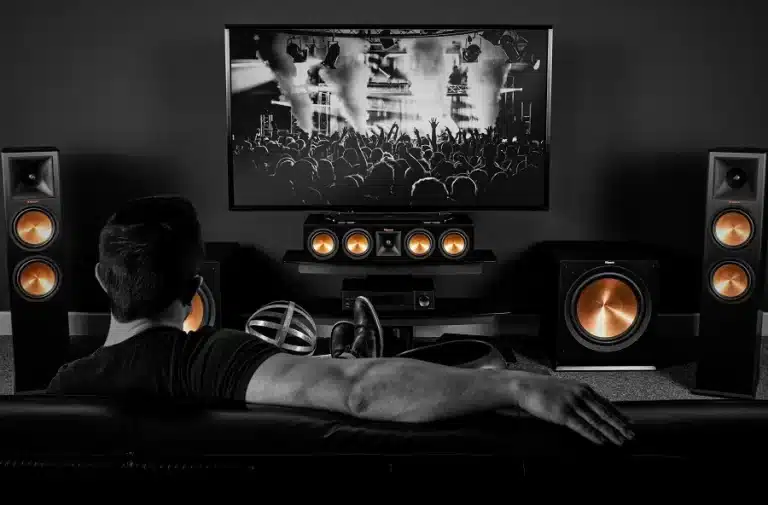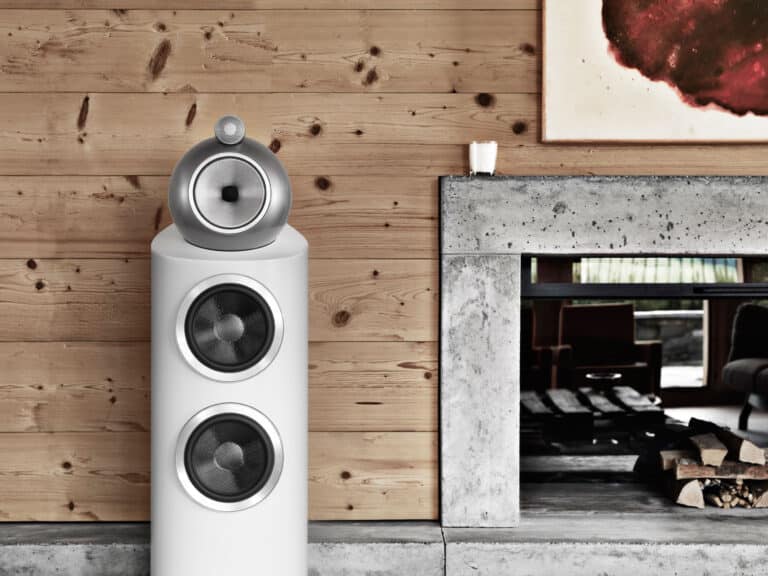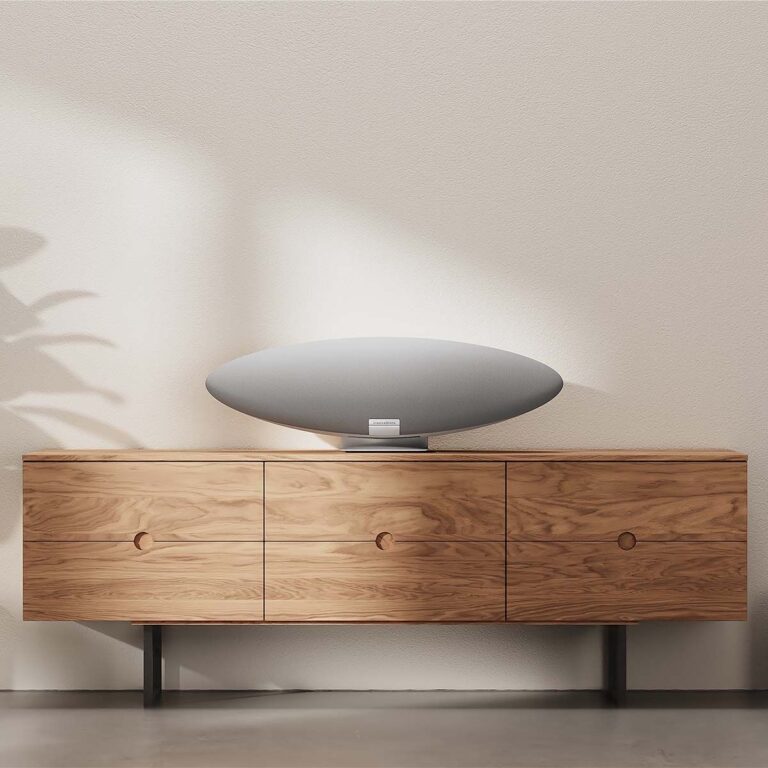-
Table of Contents
Introduction
Designing a home theater involves creating a dedicated space that combines aesthetics, acoustics, and technology to deliver an immersive cinematic experience. It requires careful planning and consideration of various elements such as room layout, seating arrangement, audio-visual equipment, lighting, and soundproofing. The goal is to replicate the ambiance of a commercial theater while providing the comfort and convenience of a home setting. By integrating high-quality sound systems, large screens or projectors, and comfortable seating, a well-designed home theater can transform movie nights into captivating experiences. Attention to detail in aspects like wall treatments, speaker placement, and ambient lighting can significantly enhance the overall experience, making home theater design both an art and a science.
Top Tips From A Home Theater Installer For Optimal Home Theater Design
Designing a home theater is an exciting endeavor that combines the art of interior design with the science of acoustics and technology. As a professional home theater installer, I have had the privilege of transforming numerous spaces into immersive entertainment hubs. To achieve an optimal home theater design, several key considerations must be taken into account, each contributing to the overall experience.
Firstly, the choice of room is paramount. Ideally, a home theater should be situated in a space that is isolated from the rest of the house to minimize sound interference. Basements are often preferred due to their natural soundproofing qualities, but any room can be adapted with the right materials. Once the location is determined, attention must be turned to the room’s dimensions. A rectangular room is generally more conducive to sound distribution than a square one, as it helps in reducing standing waves and echoes.
Transitioning from the room’s structure to its interior, the selection of seating is crucial. Comfort is key, but so is the arrangement. Seats should be positioned at an optimal distance from the screen, typically 1.5 to 2.5 times the diagonal size of the screen, to ensure a comfortable viewing angle. Additionally, staggered seating or risers can be employed to provide unobstructed views for all viewers, enhancing the communal experience.
Moving on to the visual components, the choice between a projector and a large-screen television depends on personal preference and room size. Projectors offer a cinematic feel and are ideal for larger rooms, while high-definition televisions provide vibrant images and are suitable for smaller spaces. Regardless of the choice, ensuring that the screen is at eye level when seated will prevent neck strain and contribute to a more enjoyable viewing experience.
Equally important is the audio setup, which can make or break the home theater experience. A surround sound system, typically a 5.1 or 7.1 configuration, envelops the audience in sound, creating an immersive environment. Speakers should be strategically placed, with the center speaker directly above or below the screen, front speakers at ear level, and surround speakers positioned to the sides or slightly behind the seating area. Subwoofers should be placed near walls to enhance bass response, but experimentation with placement is often necessary to achieve the best sound quality.
Lighting also plays a significant role in home theater design. Dimmable lights or smart lighting systems allow for control over the ambiance, reducing glare on the screen while maintaining enough illumination for safety. Wall sconces or recessed lighting can provide subtle illumination without distracting from the viewing experience.
Finally, acoustics must not be overlooked. Soundproofing the room with acoustic panels, heavy curtains, or carpets can significantly reduce sound leakage and improve sound quality within the space. These elements help in absorbing excess sound and preventing echoes, ensuring that the audio remains crisp and clear.
In conclusion, designing an optimal home theater involves a harmonious blend of technical and aesthetic considerations. By carefully selecting the room, seating, visual and audio components, lighting, and acoustics, one can create a space that offers an unparalleled entertainment experience. With these tips from a seasoned home theater installer, homeowners can embark on their journey to crafting a personal cinematic haven.
Essential Elements Of Home Theater Design: Insights From A Professional Home Theater Installer
Designing a home theater is an intricate process that requires careful consideration of various elements to create an immersive and enjoyable viewing experience. As a professional home theater installer, I have observed that the most successful home theaters are those that seamlessly integrate technology, aesthetics, and functionality. To achieve this, it is essential to focus on several key components, each contributing to the overall effectiveness of the home theater.
First and foremost, the choice of display is crucial. Whether opting for a high-definition television or a projector and screen setup, the display should be selected based on the room’s size and lighting conditions. A larger room may benefit from a projector, which can provide a more cinematic experience, while a smaller space might be better suited to a high-quality television. Additionally, the resolution and color accuracy of the display are vital for ensuring a sharp and vibrant picture, enhancing the viewer’s engagement with the content.
Equally important is the audio system, which plays a pivotal role in creating an immersive atmosphere. A surround sound system, typically consisting of multiple speakers strategically placed around the room, can envelop the audience in sound, making them feel as though they are part of the action. The placement of these speakers is critical; they should be positioned to provide balanced sound coverage throughout the room. Furthermore, investing in a high-quality receiver can significantly enhance the audio experience by delivering clear and powerful sound.
The room’s acoustics also warrant careful attention. Soundproofing measures, such as acoustic panels and heavy curtains, can minimize external noise and prevent sound from escaping the room, thereby maintaining the integrity of the audio experience. Additionally, the room’s shape and materials can affect sound quality, so it is advisable to consult with an acoustics expert to optimize the space for audio performance.
Lighting is another essential element that can greatly influence the home theater experience. Ideally, the room should have controllable lighting that can be dimmed or adjusted to suit different viewing scenarios. Recessed lighting or wall sconces can provide ambient light without causing glare on the screen. Moreover, blackout curtains or shades are recommended to block out natural light, ensuring that the room remains dark and conducive to viewing at any time of day.
Seating is a critical aspect that should not be overlooked. Comfortable seating arrangements, such as recliners or theater-style chairs, can enhance the viewing experience by providing support and comfort during long viewing sessions. The seating should be arranged to ensure that every viewer has an unobstructed view of the screen, with the optimal distance determined by the size of the display.
Finally, the integration of smart technology can elevate the home theater experience to new heights. Automation systems that control lighting, audio, and video components can simplify operation and enhance convenience. With a single remote or smartphone app, users can easily adjust settings to create the perfect viewing environment.
In conclusion, designing a home theater involves a harmonious blend of technology, acoustics, lighting, and comfort. By paying attention to these essential elements, homeowners can create a space that not only meets their entertainment needs but also provides a truly immersive and enjoyable experience. As a professional home theater installer, I have seen firsthand the transformative power of a well-designed home theater, and I encourage anyone embarking on this journey to consider these insights carefully.
How To Choose The Right Home Theater Installer For Your Dream Home Theater Design
Creating a home theater that perfectly encapsulates your vision of an ideal entertainment space requires not only a well-thought-out design but also the expertise of a skilled installer. Choosing the right home theater installer is a crucial step in bringing your dream to life, as their expertise can significantly influence the quality and functionality of the final setup. To ensure you make an informed decision, it is essential to consider several key factors that will guide you in selecting the most suitable professional for your project.
First and foremost, evaluating the experience and credentials of potential installers is paramount. An installer with a proven track record in home theater design and installation will likely possess the necessary skills to handle the complexities of your project. It is advisable to inquire about their previous work, asking for references or a portfolio that showcases their expertise. This will not only provide insight into their capabilities but also offer a glimpse into their design style and attention to detail.
In addition to experience, the installer’s understanding of the latest technology and trends in home theater systems is equally important. The world of audio-visual technology is ever-evolving, with new advancements continually enhancing the home theater experience. An installer who stays abreast of these developments will be better equipped to recommend cutting-edge solutions that align with your vision and budget. Engaging in a conversation about the latest innovations can also reveal the installer’s passion and commitment to their craft, further assuring you of their suitability for the task.
Moreover, communication is a critical component of a successful collaboration. The installer should be able to articulate complex technical concepts in a manner that is easily understandable, ensuring that you are fully informed throughout the process. This transparency fosters trust and allows for a more seamless integration of your ideas into the design. Additionally, a good installer will actively listen to your preferences and requirements, tailoring their approach to meet your specific needs.
Another vital consideration is the installer’s ability to work within your budget while still delivering a high-quality outcome. It is essential to have a clear understanding of the costs involved, including any potential additional expenses that may arise during the installation process. A reputable installer will provide a detailed estimate and be upfront about any financial implications, allowing you to make informed decisions without unexpected surprises.
Furthermore, the installer’s commitment to customer service and post-installation support should not be overlooked. A professional who offers ongoing maintenance and troubleshooting services can be invaluable, ensuring that your home theater system continues to operate at its best long after the initial installation. This level of support reflects the installer’s dedication to customer satisfaction and their confidence in the quality of their work.
In conclusion, selecting the right home theater installer involves a careful assessment of their experience, technological expertise, communication skills, budget management, and customer service. By taking the time to evaluate these factors, you can ensure that your dream home theater design is executed with precision and excellence. Ultimately, the right installer will not only bring your vision to life but also enhance your enjoyment of the space for years to come.
Q&A
1. **Question:** What is the ideal screen size for a home theater?
**Answer:** The ideal screen size for a home theater depends on the viewing distance. A common guideline is to have the screen size be about 1/3 to 1/2 of the viewing distance. For example, if you sit 10 feet (120 inches) away, a screen size of 40 to 60 inches is recommended.
2. **Question:** How should speakers be positioned in a 5.1 surround sound system?
**Answer:** In a 5.1 surround sound system, the front left and right speakers should be placed at ear level and angled towards the seating area, the center speaker should be directly above or below the screen, the two surround speakers should be placed slightly behind and to the sides of the seating area, and the subwoofer can be placed anywhere in the room for optimal bass response.
3. **Question:** What is the recommended room lighting for a home theater?
**Answer:** The recommended room lighting for a home theater is low ambient lighting with dimmable options. Use blackout curtains to block external light, and consider installing LED strip lights or wall sconces with dimmers to create a comfortable viewing environment without glare on the screen.
Conclusion
A well-designed home theater can significantly enhance the viewing experience by combining optimal audio-visual elements, comfortable seating, and appropriate room acoustics. Key considerations include selecting the right screen size and type, ensuring proper speaker placement for immersive sound, and controlling ambient light to prevent glare. Additionally, thoughtful room layout and decor can contribute to both functionality and aesthetics. By carefully planning these aspects, a home theater can provide a cinematic experience that rivals commercial theaters, tailored to personal preferences and space constraints.







